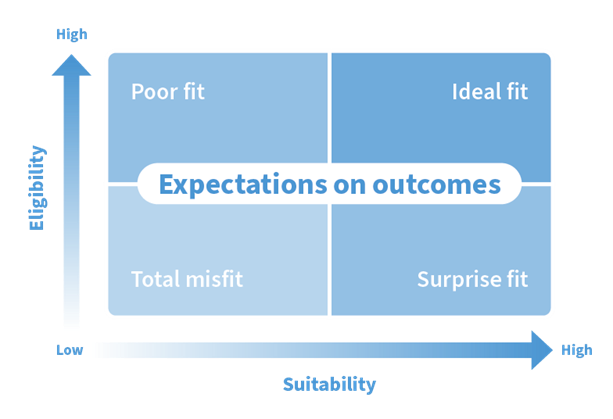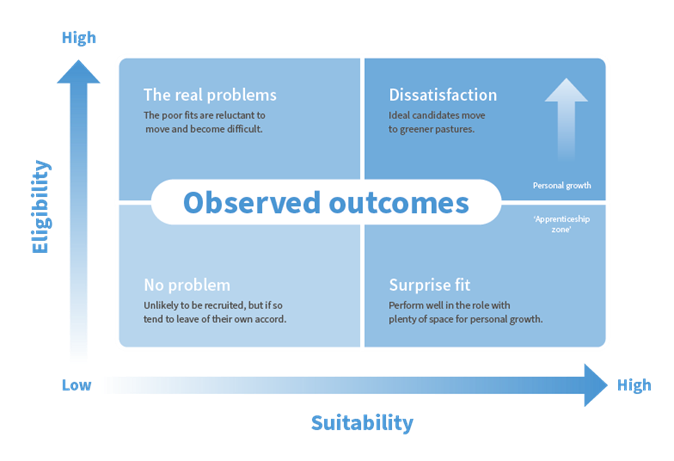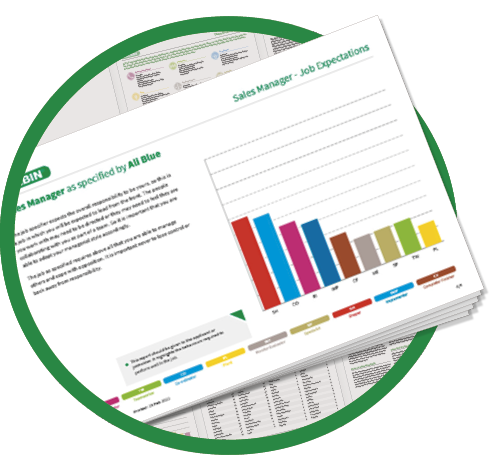Recruitment is a necessary and inevitable task for any growing company. It is exciting to be recruiting. It indicates company progress and success. Expanding the workforce is a natural part of ongoing company development.
Job vacancies can attract a high number of applications – some, incredibly high, depending upon the nature of the vacancy being advertised. Industry reports show that at the height of the pandemic, employers received an average of 506 applications for each low-skilled vacancy, 267 applicants for medium-skilled vacancies, and 56 applicants for high-skilled vacancies.[1]
Regardless of the number of applicants, employers need to try and ensure that the approach they take to drawing up the interview shortlist will capture the individuals most likely to be a good fit for the role. And for the company too.
But what is the best approach to create a shortlist, especially when time is often of the essence? The business is understaffed and there is work that needs to be done. Now.
The tried and tested method of sifting candidates using CVs, basing eligibility on education, qualifications and other ‘hard skills’ from previous experiences will usually be applied. Then, following an interview process – which may or may not include some assessment tests – a preferred candidate will be identified and a job offer made and accepted (hopefully). Job done.
But is it?
Has the ‘best’ candidate been identified? Have applicants been narrowed down and interview questions used to identify the right candidates, and ultimately the new appointee?
‘Do you want a collection of brilliant minds or a brilliant collection of minds?’
So asked Dr Meredith Belbin after extensive years of research into identifying, and crucially then being able to predict, what makes some teams more successful than others.
The research underpinned the identification of Belbin Team Roles, the nine identifiable clusters of behavioural attributes individuals demonstrate when working as part of a team.
It can be a natural assumption to make that the ‘most talented’ and ‘well-educated’ individuals are going to be the most desirable candidates for a role. However, during the years in which Dr Belbin was conducting his research, this was shown not to be the case.
For example, ICI once placed a high premium on recruiting graduates with only the highest-level degrees in Chemistry and Engineering subjects. When this approach continued to result in just as many poor performers, it started to become clear that selection through academic quality alone might not be the best approach. This presented a ‘qualifications mystery’.[2] Simply recruiting based on qualifications alone, and later qualifications and previous job roles held, does not necessarily guarantee the best candidate for a job in a particular team in a particular company.
The right fit: ‘eligibility’ vs ‘suitability’
Prescribing careers based on qualifications and hard skills alone frequently produces unpredictable results. Yet job descriptions – which underpin the entire recruitment process – are usually drawn up with only these factors in mind.
The notion of also finding the ‘right fit’ for a role in terms of attributes beyond hard skills may also be acknowledged and referenced during conversation. What constitutes ‘the right fit’ in these terms will most likely be expected to be ascertained through first impressions or ‘gut feel’ rather than specific strengths and behaviours being clearly articulated and defined within the actual job description document.
During his extensive research into teams and experience, Dr Meredith Belbin defined two separate elements in the recruitment and selection process: "eligibility" and "suitability".
‘Eligibility’ includes everything that can be covered by a CV or at interview – skills and qualifications, relevant experience, references, and performance at interview.
‘Suitability’ is less tangible. It includes aptitude for the role, versatility (a ‘can do’ attitude) and behavioural (Team Role) fit with the job in question.
During Dr Belbin’s research, certain patterns emerged when observing the role of hard skills and behavioural inclinations in matching people to jobs, which are summarised in the illustration below:

‘Total misfits’ are those who are neither eligible nor suitable. They tend to acknowledge the fact and move on. There is then a need to recruit again for that position.
‘Poor fit’ relates to those who possess the qualifications but not the behavioural tendencies and often became stuck. They are frequently defensive and resentful of having to leave a job for which they ae qualified on paper, but unable to fulfil the role due to other factors which haven’t been taken into consideration during the recruitment process.
‘Ideal fit’ represents those who possess both the qualifications and the appropriate behaviours for the job and who would seem to be an ideal fit. However, research shows they don’t tend to last long in the job. Since there is no real challenge or learning curve, these candidates often see the role as a stepping-stone and move on to greener pastures.
‘Ideal fit’ & ‘Surprise fit’
An interesting category is the 'surprise fit' (suitable, but barely eligible). These individuals lack the qualifications or hard skills but possess the right behaviours for the job. Unlike the 'ideal fits', these individuals often see new challenges and opportunities for development.
Paradoxically, the research revealed that those deemed to be ‘ideal fits’ (based on having the best qualifications and hard skills for the job) may not, in fact, prove ideal.
The ‘surprise fits’, can often demonstrate a level of commitment to the company greater than anything an ‘ideal fit’ may demonstrate. The ‘ideal fit’ individuals can become dissatisfied, feeling they are no longer challenged and ultimately look for higher positions elsewhere. The ‘surprise fits’ tend to stay much longer term, retaining expertise and experience within the company.
In other words, the research surmised that not only did eligibility fail to guarantee a good fit with the job, but that it could actually preclude it. How often do people say, “Well, if those qualifications had been demanded for my job, I would never have been shortlisted”?

Striking a balance: hire for behaviour, train for knowledge?
Of course, certain jobs do require specific qualifications and particular demonstrable technical abilities. Some candidates who are ‘ideal fits’ in this regard may stay with a company for the long term, especially if their aspirations are managed and they continue to be satisfied in their work.
There can, however, be a tendency to place higher value on candidates who already possess the hard skills being sought and overlook the ‘semi-eligibles’. These candidates, with training and experience in the job, could last longer in the role, become valuable contributors and gain more fulfilment.
Everyone is different and has their own preferred way of working in and contributing to a team. Performing ‘in role’ (as far as Belbin Team Roles are concerned) provides a confidence boost, whilst identifying training needs, and crucially, providing the necessary training allows individuals to grow in the role.
Define jobs meaningfully beyond hard skills
When defining a job or responsibility, companies often consider the qualifications and skills required, whilst neglecting the specific behavioural attributes needed to be successful in the role. As discussed, it is not necessarily the most qualified individual that will be the best candidate.
If personal attributes are given space in the job description, it is often in the form of a "shopping list" of generic, positive characteristics which is not necessarily specific to the role in question and does not help to discern between possible candidates.
This is where the language of Belbin Team Roles can be a valuable addition to the recruitment process toolkit.

Belbin reports are designed to facilitate and inform decision-making in recruitment, as part of a rich and full process. Belbin Job reports describe jobs in terms of the behavioural demands they make on the individual performing that job. The Job report enables line managers and recruiters to define a particular job role in terms of Belbin Team Role behaviours.
It offers advice regarding the role for both managers and potential applicants or incumbents. The report outlines the nature of the behavioural demands the job will place upon whoever secures the role, and the kind of expectations others might have for the jobholder. These can be included in the job description when the vacancy is advertised.
The Team Role requirements for the job can then be compared with an applicant’s behavioural attributes beyond just their qualifications. If applicants also have a Belbin Individual Report which analyses their contributions in the workplace in terms of the nine Belbin Team Roles, these can then be viewed alongside the behavioural demands as identified in the Job report. Matches of preferred working styles can be seen, as well as manageable roles which could be developed.
Combine Team Role strengths with suitable opportunity
It is important to remember that Belbin Job reports do not provide a definitive 'yes' or 'no' as to a candidate’s suitability. Each organisation's recruitment process is far too complex and nuanced. They do offer an additional source of information, as well as guidance and advice on how to start conversations with candidates and ask the right questions to establish Team Role fit.
Everyone has ‘manageable Team Roles’, those behaviours which are not in someone’s preferred Team Roles, but which could be cultivated and developed to help fit a particular job if the individual has sufficient interest, aptitude, and motivation. However, substantial changes in Team Role behaviour are rare. And according to Dr Belbin's findings, an unsuitable candidate never provides the ideal fit between person and job, regardless of how good that person and their hard skills may look on paper.
- ENDS –
Belbin is a practical, evidence-based tool which has been used by companies across the globe, in all industries, for over 35 years. Discover more about Belbin, including a sample Job report download, and other tools to build effective teams, on the Belbin website: www.belbin.com.
[1] https://standout-cv.com/pages/job-search-statistics-uk#:~:text=Industry%20reports%20show%20that%20at,applicants%20for%20high%2Dskilled%20vacancies.
[2] “Team Roles at Work”, R. Meredith Belbin, Victoria Brown (Third Edition, 2023)
